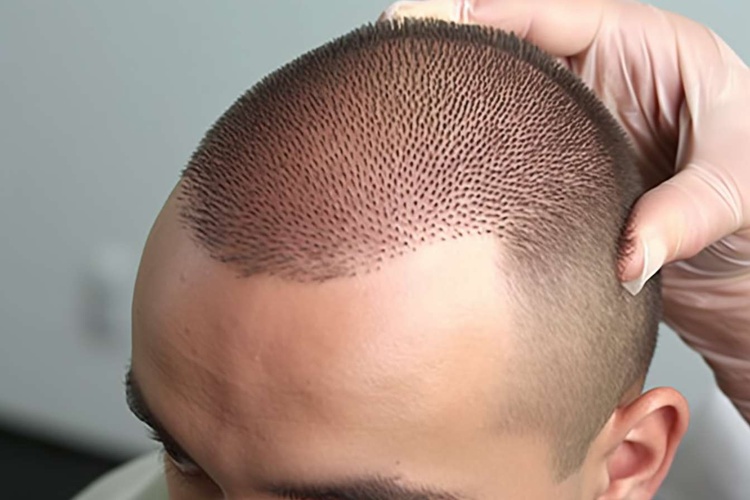Advanced Restoration Techniques and Options for 2025
Hair loss affects millions worldwide, impacting self-confidence and quality of life. As medical technology advances, restoration procedures have evolved from rudimentary techniques to sophisticated approaches offering natural-looking results. With innovations in follicular extraction, artificial intelligence, and regenerative medicine, 2025 promises groundbreaking developments in addressing hair loss permanently.

Hair restoration represents one of the most effective and permanent solutions for addressing hair loss. As we approach 2025, significant advancements in technology, techniques, and understanding of hair biology are revolutionizing this field. This article explores current and emerging hair restoration options, providing valuable insights for those considering treatment in the coming years.
Understanding Hair Loss: Root Causes and Diagnosis
Hair loss (alopecia) stems from various factors, including genetics, hormonal changes, medical conditions, medications, and lifestyle factors. Male and female pattern baldness, scientifically known as androgenetic alopecia, accounts for approximately 95% of hair loss cases. This condition is characterized by the progressive miniaturization of hair follicles due to sensitivity to dihydrotestosterone (DHT), a derivative of testosterone.
Modern diagnostic approaches now include trichoscopy (scalp microscopy), genetic testing, and blood work to identify specific causes. These advanced diagnostic tools enable practitioners to develop personalized treatment plans rather than one-size-fits-all approaches. By 2025, AI-powered diagnostic systems are expected to further enhance the accuracy of hair loss assessment, predicting progression patterns and optimal treatment responses.
Hair Restoration in 2025: Evolving Transplantation Techniques
Hair restoration techniques have undergone remarkable evolution. The two primary methods currently dominating the field are Follicular Unit Transplantation (FUT) and Follicular Unit Extraction (FUE).
FUT involves removing a strip of scalp from the donor area (typically the back of the head), dissecting it into individual follicular units, and transplanting these units to balding areas. While effective, this technique leaves a linear scar.
FUE, now the more popular option, involves extracting individual follicular units directly from the donor area using specialized micro-punches, leaving minimal scarring. By 2025, robotic FUE systems are expected to achieve unprecedented precision, reducing procedure time and improving graft survival rates.
Emerging techniques for 2025 include:
- Direct Hair Implantation (DHI): An advanced form of FUE using specialized implanter pens for simultaneous extraction and implantation
- No-shave FUE: Allowing patients to undergo transplantation without visible evidence of the procedure
- Stem cell-assisted transplantation: Enhancing graft viability through growth factors
The Future of Hair Loss Solutions: Non-Surgical Alternatives
While surgical restoration remains the gold standard for permanent results, 2025 will see remarkable advancements in non-surgical alternatives:
-
Exosome Therapy: These cell-derived vesicles contain growth factors and microRNAs that stimulate dormant hair follicles. Clinical trials show promising results for combining exosomes with traditional treatments.
-
Platelet-Rich Plasma (PRP): Already popular, PRP involves injecting concentrated platelets from the patient’s blood into the scalp to stimulate follicle regeneration. By 2025, standardized protocols and combination approaches will likely enhance efficacy.
-
Low-Level Laser Therapy (LLLT): Advanced home devices using specific wavelengths to stimulate follicles are becoming more effective and convenient.
-
JAK Inhibitors: Originally developed for autoimmune conditions, these medications show promise for treating various forms of alopecia, with topical formulations under development to minimize systemic side effects.
-
Gene Therapy: Research targeting the genetic components of hair loss is progressing, with potential breakthroughs expected by 2025.
Regenerative Medicine: The Next Frontier in Hair Restoration
Perhaps the most exciting development for 2025 is the advancement in regenerative medicine approaches to hair restoration. Scientists are making significant progress in several areas:
-
Hair Cloning: Researchers are developing techniques to multiply a patient’s hair-producing cells in laboratory settings, potentially creating an unlimited supply of transplantable follicles.
-
3D-Printed Hair Follicles: Bioprinting technology is being adapted to create functional hair follicles, with early prototypes showing promising results.
-
Cell-Based Therapies: Adipose-derived stem cells and dermal papilla cell treatments are advancing toward clinical applications, potentially regenerating hair without transplantation.
-
Tissue Engineering: Creating laboratory-grown hair follicle germs that develop into functional follicles when transplanted.
Cost Considerations and Provider Comparisons for 2025
Restoration procedure costs vary significantly based on technique, clinic reputation, geographic location, and the extent of hair loss. Understanding these variations helps in making informed decisions.
| Procedure Type | Average Cost Range (2025 Projection) | Key Considerations |
|---|---|---|
| FUE Technique | $4,000 - $15,000 | Minimal scarring, longer procedure time |
| FUT Technique | $3,500 - $12,000 | Linear scar, shorter procedure time |
| Robotic FUE | $5,000 - $20,000 | Precision, reduced human error |
| DHI Technique | $5,500 - $18,000 | No-shave option, quicker recovery |
| Stem Cell-Enhanced | $6,000 - $25,000 | Improved graft survival rates |
Prices, rates, or cost estimates mentioned in this article are based on the latest available information but may change over time. Independent research is advised before making financial decisions.
Patient Considerations: Managing Expectations and Recovery
Regardless of technological advancements, successful restoration outcomes depend significantly on patient selection, expectations management, and post-procedure care. Important considerations include:
-
Candidacy Assessment: Not everyone is an ideal candidate. Factors like hair characteristics, donor supply, and progression of hair loss affect suitability.
-
Timeline Understanding: Final results typically take 12-18 months to fully manifest, with initial shedding (shock loss) being normal.
-
Combination Approaches: Many practitioners now recommend combining surgical restoration with medical treatments like finasteride or minoxidil to protect existing hair.
-
Long-term Planning: Hair loss is progressive, and future procedures may be necessary as pattern baldness continues in non-treated areas.
By 2025, enhanced pre-visualization technology will allow patients to see projected results with greater accuracy, while improved post-operative protocols will reduce recovery time and enhance graft survival rates.
Hair restoration continues to evolve rapidly, offering increasingly natural results with minimal downtime. As we approach 2025, the convergence of surgical refinement, regenerative medicine, and pharmaceutical innovations promises to transform the landscape of hair restoration. For those considering treatment, staying informed about these advancements while maintaining realistic expectations will be key to achieving satisfactory outcomes.
This article is for informational purposes only and should not be considered medical advice. Please consult a qualified healthcare professional for personalized guidance and treatment.



